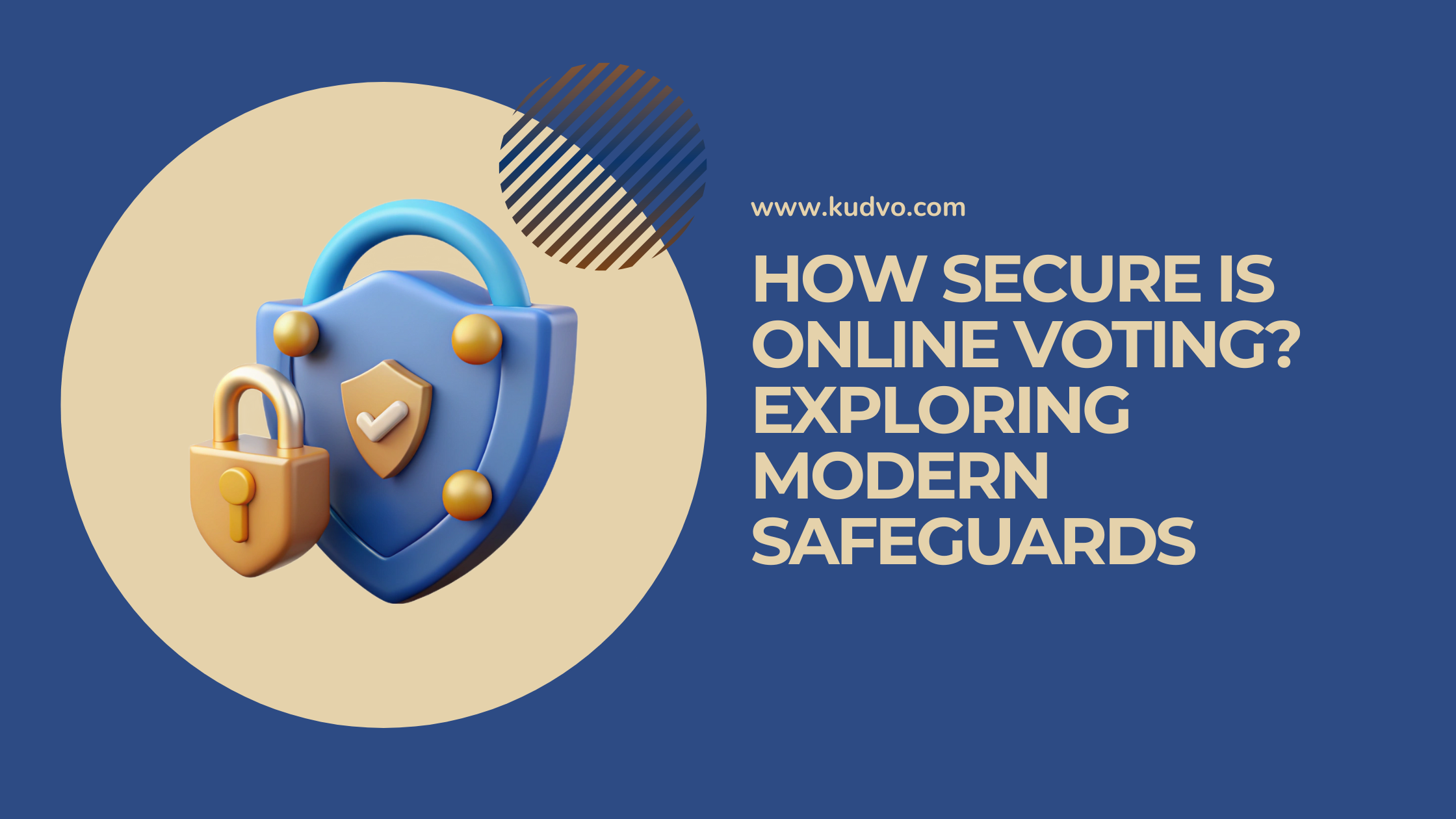How Secure Is Online Voting? Exploring Modern Safeguards
Introduction
Can you trust your vote if it's cast online?
It’s a question many voters are asking as more countries experiment with digital elections. While online voting offers unmatched convenience, it also raises concerns about cybersecurity, voter privacy, and election integrity.
This blog takes a closer look at how online voting works, the modern safeguards in place to protect it, and whether the system is ready for widespread adoption.
Brought to you by www.kudvo.com—exploring the tech shaping tomorrow’s democracy.
1. Why Security Matters in Online Voting
Traditional in-person voting uses physical ballots and human oversight to ensure votes are cast and counted fairly. With online voting, the entire process happens digitally, making security a top priority.
Key risks include:
Hacking or malware compromising votes
Voter impersonation or fraud
Server outages or data breaches
Lack of transparency in how votes are counted
For online voting to be trusted, it needs to meet high standards for confidentiality, integrity, availability, and verifiability.
2. Core Security Technologies Behind Online Voting
Modern online voting systems don’t rely on basic web forms. They use a sophisticated blend of technologies designed to prevent tampering and protect voter data.
🔐 Encryption
Ensures data is scrambled in transit and at rest.
Prevents unauthorized access to votes or personal information.
🧾 Voter Authentication
Uses secure logins, digital ID cards, or biometric verification.
Estonia, for example, requires a government-issued digital ID to vote online.
✅ End-to-End Verifiability
Allows voters to confirm their vote was recorded and counted without compromising privacy.
Uses cryptographic proofs and receipts to verify each step.
🔄 Blockchain & Distributed Ledgers
Some systems use blockchain to create a tamper-proof audit trail.
Ensures transparency and prevents retroactive changes.
3. Real-World Case Studies: Successes & Lessons
Countries and regions have already tested online voting—with mixed results. Here’s what we’ve learned:
✅ Success: Estonia
First country to offer nationwide online voting (since 2005).
Over 50% of votes in 2023 were cast online.
Relies on strong digital ID infrastructure and public trust.
⚠️ Challenge: Switzerland
Piloted online voting, but paused in 2019 due to security concerns.
A public code audit revealed potential vulnerabilities.
Now focusing on open-source systems with public testing.
🤔 Experiment: West Virginia, USA
Trialed mobile voting for overseas military voters.
Used blockchain to track ballots.
Criticized by cybersecurity experts over lack of transparency.
4. Building Trust: What’s Needed for Widespread Adoption?
Even the most secure system won’t succeed without public trust. Here's what online voting platforms need to focus on:
✔️ Transparency
Open-source code and independent audits
Public testing environments
✔️ Accessibility
Easy-to-use interfaces for all voters
Support for assistive technologies
✔️ Backup Plans
Hybrid systems (e.g., vote online but confirm via mail or print)
Emergency protocols in case of system failure
✔️ Education
Clear voter guides on how systems work
Addressing misinformation and fear of digital platforms
Conclusion: Security Is Evolving, But Trust Takes Time
Online voting offers huge potential, especially for voters abroad, people with disabilities, and younger digital-native generations. While today's technology includes robust safeguards—encryption, authentication, and verifiability—no system is flawless.
Building secure, trustworthy digital elections requires ongoing investment, transparency, and public dialogue. We're not fully there yet, but we're getting closer.
To stay up-to-date on the future of digital democracy and explore tools driving secure civic innovation, visit www.kudvo.com.
